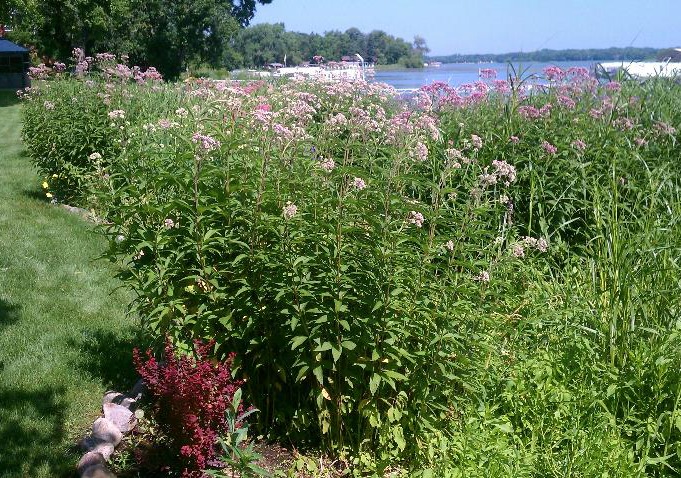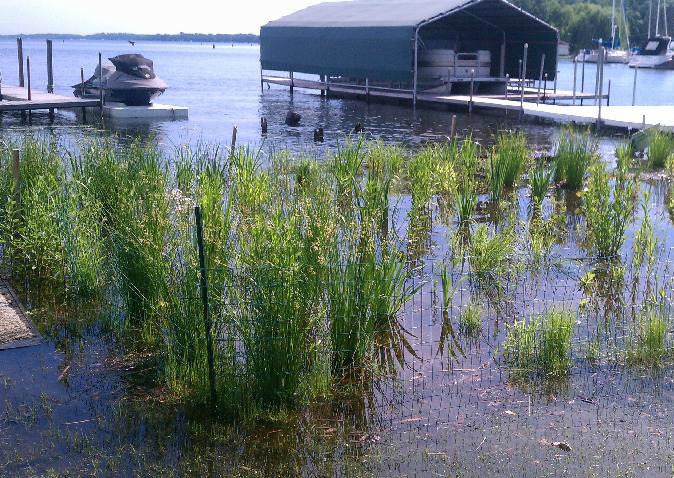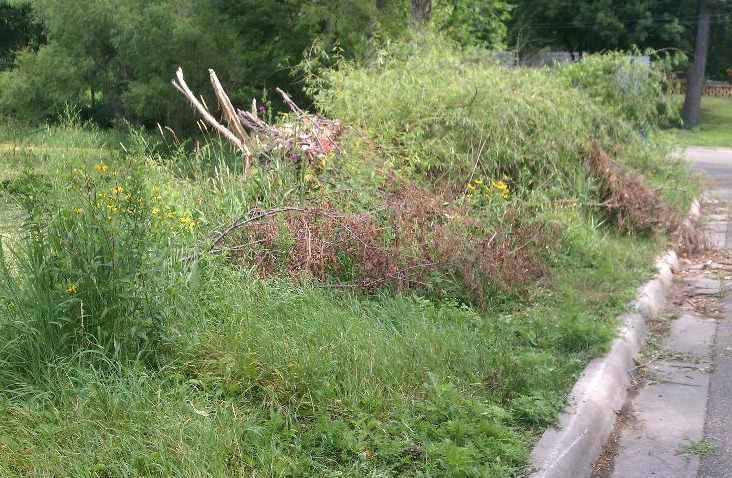Often times, restoration owners ask us why the plants do not look the same as when the site was installed years ago. Tall plants meant for the back have moved to the front, blocking smaller plants from view. Plants meant to stay in neat clumps have spread and intermingled with other plants throughout the restoration. Some plants have simply disappeared and others have taken their place. Why does this happen? There are multiple reasons why plants in their restoration are changing.

Tall plants have migrated to the front, blocking view of shorter species.
Often times a restoration with both prairie grasses and flowers will, over time, favor grasses. In shoreline restorations as well, given certain site conditions, sedges and grasses can start encroaching into upland areas where they weren't intended. Lake sedge and Canada Blue Joint are examples of sedges and grasses that might migrate on a site.
Lake sedge and Canada Blue Joint migrating upland
Plants can also migrate because site conditions can change from year to year. This year there were a few storms that took down trees near restorations all over the metro area. When the trees come down, that opens the site up to light that will have an effect on what plants grow best on that site. Shade tolerant plants might be pushed out by new sun-loving plants taking advantage of the new light. Moisture conditions can also change over time, especially on shoreline restorations. Water levels can fluctuate based on drought conditions, affecting plants that require very wet conditions. However this year, many sites have flooded due to more rain, causing some upland plants to die or new weeds to encroach on the restoration.


Left: Abnormally high water levels will cause some plants to die and some to thrive. Right: A fallen Willow tree will open up the restoration to light, effecting which plants do best.
To keep a restoration looking more like it did when it was installed our maintenance crew sometimes has to control certain native plants as well as the non-native species. Some native plants come into a restoration on their own, and despite being native, can be very aggressive. These natives include Canada Goldenrod, Brown Eyed Susan, Jewelweed, Ragweed, and many others.
Left: Picture of restoration before Brown Eyed Susan became aggressive. Right: Picture of restoration with Brown Eyed Susan overshadowing other natives.
Once again these changes and their causes vary from site to site. Some plants that are aggressive and taking over in one restoration will be perfectly well behaved in another. A plant that did well in similar conditions at one site might not necessarily do as well in another because of soil or moisture conditions. Depending on how landscaped a look is preferred, native plants will need to be controlled and new flowers will need to be planted to ensure there are beautiful blooms year after year.